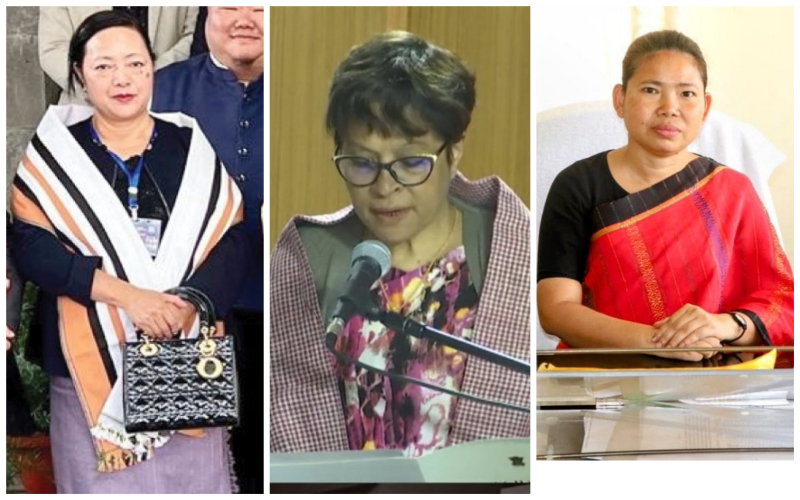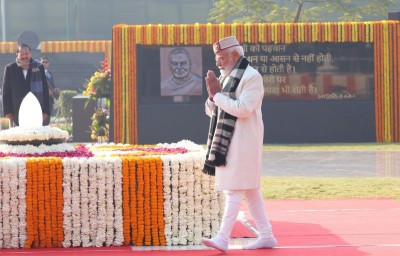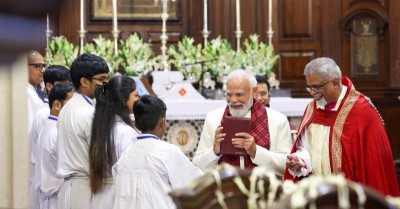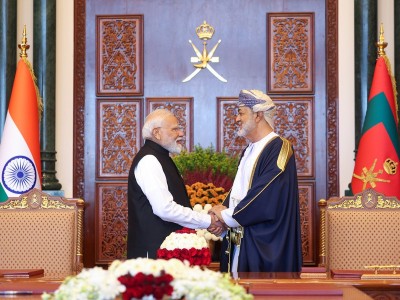 Northeast Elections
Northeast Elections
Northeast Elections : When women shine bright
Agartala/Shillong/Kohima: Women shine bright in the recent elections in three North Eastern states of Tripura, Nagaland and Meghalaya, with 14 women elected to the state assemblies, overtopping the tally of only six women legislators in the previous houses.
In the February 16 and 27 assembly polls, the highest number of nine women were elected to the Tripura assembly followed by three in Meghalaya and two in Nagaland.
In each state one woman legislator was made cabinet minister and entrusted with important departments.
Scripting history in 60 years of statehood, two women, Hekhani Jakhalu and Salhoutuonuo Kruse of the ruling Nationalist Democratic Progressive Party (NDPP), were for the first time elected to the Nagaland assembly from Western Angami and Dimapur-III assembly constituencies respectively.
Fifty-six-years-old Salhoutuonuo Kruse was included in the 12-member cabinet headed by Chief Minister Neiphiu Rio and she has been given the Women Resource Development and Horticulture Departments.
In all 183 candidates including four women nominees contested the February 27 assembly elections in Nagaland.
With nine of the 31 women contestants winning in February 16 elections, the Tripura assembly now has the highest number of women legislators since it became a full-fledged state in 1972.
In 2013, five of the 15 women contestants became lawmakers in Tripura, while three women were elected in the assembly polls in 2018.
Of the nine women elected in Tripura Ms Santana Chakma, a Buddhist tribal leader, has been allotted the vital Industries and Commerce, Welfare of Other Backward Communities and Jail (Home) departments.
In Meghalaya three women, the same number as in the previous election (2018), were elected in the February 27 assembly elections when 36 women fought the poll battle.
In the 2018 assembly elections, five women contested in Nagaland and none was elected while in Tripura 24 women fought and three women won. In Meghalaya 32 women tried their electoral fortunes and three were successful.
In Tripura, BJP candidates Mina Rani Sarkar (from Badharghat assembly constituency), Ms Pratima Bhowmik (Dhanpur), Antara Sarkar Deb (Kamalasagar), Ms Santana Chakma (Pecharthal), Swapna Majumder (Rajnagar), Swapna Das Paul (Surma), Kalyani Saha Roy (Teliamura) and Tipra Motha Party nominees Swapna Debbarma (Mandai Bazar) and Nandita Debbarma Reang (Raima Valley) were elected to the state assembly in the February 16 elections.
In Meghalaya, former state minister Mazel Ampareen Lyngdoh and Santa Mary Shylla, both from the ruling National People's Party (NPP) and Miani D. Shira of the Trinamool Congress, were elected to the assembly.
Congress turned NPP leader Lyngdoh retained her East Shillong constituency while Shira made it to the Assembly once again from Ampati.
The 58-years-old Dr Lyngdoh has been allotted the departments of Agriculture, Directorate of Information and Public Relations (DIPR), Health and Law.
Shylla marked one of the biggest upsets of this election by defeating Lok Sabha member from Shillong parliamentary constituency and Meghalaya state Congress president Vincent H. Pala in the Sutnga-Saipung assembly seat.
Dr Lyngdoh urged women legislators not to allow party politics to achieve their common interest.
Terming the low representation of women in the Assembly as ‘very sad’, she said, “Three has been more or less a number that has been there for quite some time. We had four then, now it is three again.”
Since 2008, Lyngdoh represented the East Shillong Constituency in Meghalaya Assembly and from 2009 until 2018, she was a Cabinet Minister in the Meghalaya government looking after many vital departments.
In the February assembly elections in the three North Eastern states, women voters' turnout was higher than men.
For the past many years, women voters have outnumbered their male counterparts in the electoral lists of several North Eastern states.
Of the total 21,61,729 voters in Meghalaya, the number of male voters is 10,68,801 and that of female voters is 10,92,326.
In Nagaland, the number of male voters is 6,52,938 and that of female voters is 6,55,144.
In Tripura, in seven of the 60 assembly constituencies, women voters outnumbered their male counterparts. The number of women ministers, MPs and MLAs in several North Eastern states is very less compared to their percentage in population.
Mizoram in the last 50 years saw only one minister and three MLAs with a similar situation in the other northeastern states.
Currently, there are no women ministers in two of the seven North Eastern states -- Mizoram, and Arunachal Pradesh.
However, the number of women in many autonomous bodies of the seven northeastern states is equally depressing, if not worse.
Of the total of 466 seats in the assemblies of these North Eastern states, only around 5 per cent are currently occupied by women.
Social activist and writer Nandita Datta said: “Women were earlier deprived of sharing governance and policy making despite female voters being more than 50 per cent in the voters' list of several North Eastern states.
They are also in the forefront in both domestic and societal affairs. However, the scenario is gradually changing with few women being elected to the assemblies and becoming ministers.”
“Many issues of North East India including the drug menace would be resolved more easily if women get the appropriate political empowerment and governance,” Datta said.
She said that North East India traditionally is a woman-empowered society, though the women were earlier given very less scope in politics, governance and policy making.
“Women of the region are educated, efficient and conscious of all basic issues. We are successfully able to take care of our family, society and administration collectively. But male political leaders thought that we are not capable,” said Datta, who has received several prestigious awards for her social work.
Out of 60 winning candidates in Tripura, 9 (15 percent) winning candidates are women in the recent polls. In 2018, out of 60 MLAs, 3 (5 per cent) MLAs were women.
In Meghalaya, out of 60 winning candidates, 3 (5 per cent) winning candidates are women. In 2018, out of 60 MLAs, 3 (5 per cent) MLAs were women.
In Nagaland, out of 60 winning candidates, 2 (3 percent) winning candidates are women.
Out of 60 MLAs, there were no women MLAs in the Nagaland 2018 Assembly Elections.
Support Our Journalism
We cannot do without you.. your contribution supports unbiased journalism
IBNS is not driven by any ism- not wokeism, not racism, not skewed secularism, not hyper right-wing or left liberal ideals, nor by any hardline religious beliefs or hyper nationalism. We want to serve you good old objective news, as they are. We do not judge or preach. We let people decide for themselves. We only try to present factual and well-sourced news.







